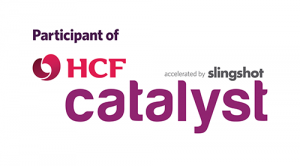In Vitro Fertilisation (IVF)
IVF is the most common type of assisted reproductive technology where the ovum (egg) is extracted from the female’s body and fertilised by sperm in a specialised laboratory. The fertilised egg is then bathed in a specific embryo culture to facilitate its growth into a blastocyst (matured embryo). Afterwards, the blastocyst is transferred and implanted in the female’s uterus with the intention of a successful pregnancy. Studies have shown that blastocysts have higher chance of successful implantation than nascent embryos.
As IVF requires egg extraction, many clinics recommend hormonal induction to encourage the production and maturation of eggs.
Intracytoplasmic Sperm Injection
During IVF, multiple embryos are usually created, one of which is implanted and the rest are preserved at extremely low temperature in liquid nitrogen. In case of an unsuccessful IVF cycle, frozen embryos can be thawed and implanted to initiate a new IVF cycle without the need for further ovulation stimulation and egg extraction.
Statistically, frozen embryos’ success rate in inducing pregnancy is similar if not the same as that of fresh embryos.
Preservation of embryos via vitrification (freezing) allows for multiple opportunities of pregnancy for every egg extraction and hormonal stimulation. You can also preserve embryos as a way of storage for pregnancy opportunities later on in life.
Artificial Insemination
Intrauterine insemination or more commonly referred to as artificial insemination is a preliminary and<strong> less invasive</strong> fertility treatment. It involves injecting sperm into the cervix during period of ovulation. Besides treating common or unexplained infertility, IUI is also beneficial for same-sex couples, single women and cases requiring the usage of frozen semen samples.
Pre-implantation Genetic Screening/Diagnosis (PGS/PGD)
Some clinics also offer PGS/PGD before the induction of IVF to determine the genetic integrity of embryos. This is due to two main reasons:
- Selecting genetically-superior embryos may improve the likelihood of pregnancy
- Selecting embryos that do not carry mutated genes (alleles) associated with disorders such as cystic fibrosis and Huntington’s disease
PGS/PGD are offered as two types of options:
- Genome Sequencing – all 24 chromosomes of embryos are surveyed and healthy embryos are selected and transferred during IVF.
- Karyomapping – specific genes of known family disorders are probed. Embryos without the faculty allele (variation of the gene) are selected for
Egg & Sperm Freezing
Many fertility centres offer fertility preservation services to maintain the integrity of eggs and sperm. This service may be beneficial for patients undergoing chemotherapy or couples who are planning to have baby in later stages of their lives.
Egg and Sperm Donor Programs
In the case where men and women are unable to have a baby with their own sperm and eggs, donor egg and sperm programs are available at most clinics. This option is beneficial for same-sex couples, people who are intending to become single parents or when the usage of patients’ own egg or sperm has resulted in successful IVF/ICSI cycles.


